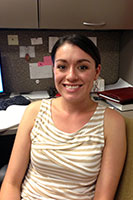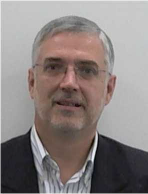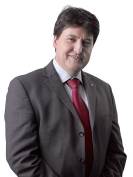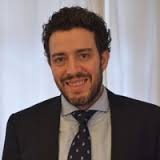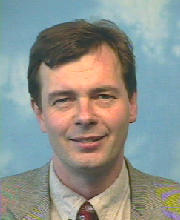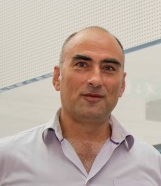Speakers
Actual
W.M. Keck Center for 3D Innovation (UTEP), Additive Manufacturing – an Elsevier Journal
Anterior
W.M. Keck Center for 3D Innovation (UTEP), Alternative Personal Care
Educación
The University of Texas at El Paso
Lecture 1 –Monday 15th June – 14:00 – 15:15
Printing Multi-functionality using Additive Manufacturing
Directeur de la Recherche Laboratoirte IRCCyN
Since 2001 and up to now, he has been Professor in Ecole Centrale de Nantes. He was the Head of the “Industrial products and systems engineering” department for three years and he has been since 2006 Deputy Director for Research. Concerning his recent research activities, he founded in 2002 and has been for 10 years the head of the “Virtual Engineering for industrial engineering” (IVGI) research team in IRCCyN laboratory, and he is now member of the new IS3P team (Systems Engineering – Product-Performance-Perception) that is an extension of IVGI team.
Lecture 2 – Monday 15th June – 16:15 – 17:30
Objects design and fabrication: a new way of thinking with additive manufacturing
Prof. Dr.-Ing. habil. Aldo R. Boccaccini is Professor of Biomaterials and Head of the Institute of Biomaterials at the Department of Materials Science and Engineering, University of Erlangen-Nuremberg, Germany.
Prior to this appointment, he was Professor of Materials Science and Engineering at Imperial College London, UK (2000-2009).
He has remained Visiting Professor of Materials at Imperial College London.
Lecture 3 –Tuesday 16th June – 09:00 – 10:15
Advances in biofabrication approaches for tissue engineering applications
Professor of Advanced Manufacturing
Director of the Manchester Biomanufacturing Centre
Paulo Bartolo holds a PhD degree in Polymer Physics from the University of Reading (UK, 2001), a Master of Science in Mechanical Engineering (1996) and a Licenciatura in Mechanical Engineering (1993), both from the Technical University of Lisbon (Portugal).
Lecture 4 – Tuesday 16th June – 11:15 – 12:30
Bio Additive Manufacturing: trends and applications
He is engineer from the “Ecole Nationale Supérieure de Céramique Industrielle” (ENSCI, Limoges). He completed his PhD at the University of Limoges in 1992 in the field of Ceramic Processes and Surface Treatments.
He is Professor of Physical Chemistry and Materials Chemistry at the University of Limoges since 2003. He was head of the department of chemistry of the Faculty of Sciences and Technics from 2004 to 2009 and he is currently head of the “Institute of Processes Applied to Materials” of the University of Limoges.
He is the leader of research team “Bioceramics” at SPCTS Laboratory since 2004. This pluridisciplinary group gathers researchers, specialized in materials sciences, pharmacy and surgery, who work on calcium phosphate based ceramics for bone tissue engineering. The activity includes the synthesis of specific powders (dydroxyapatite, carbonated or silicon substituted apatite, tricalcium phosphate, BCP) the shaping and sintering processes of bioceramics, their functionalization by active biomolecules (proteins, growth factors, drug substances…) and the evaluation of their in vitro and in vivo behaviour.
Lecture 5 -Tuesday 16th June – 14:00 – 15:15
Additive manufacturing by (micro)stereolithography of on-demand bioceramics for bone tissue engineering.
Germán Esteban Muñiz, Senior Chemical Engineer, worked for a decade in water treatment, hydraulic infrastructures and discrete and process manufacturing before joining the European Commission in 2011. He works as Programme Officer at DG Research and Innovation at the Key Enabling Technologies (KETs) Directorate.
He has managed over €200 million in FP7 EU projects and is an active player in the Horizon 2020 Public-Private Partnerships of Factories of the Future (FoF) and Sustainable Process Industry through Resource and Energy Efficiency (SPIRE).
Under H2020, he works in the KETs at the Industrial Leadership pillar and contributes to the Societal Challenge of Climate Action, Resource Efficiency and Raw Materials under the European Innovation Partnership on Raw Materials (EIP RM).
Mr. Esteban is also the EC contact point and responsible for the Additive Manufacturing (AM) Platform, which has recently launched its Strategic Research Agenda (SRA) 2014-2020, highlighting priority areas for future development and the roadmap for AM standardization.
RoundTable – Tuesday 16th June – 16:15 – 18:00
“3D-Print your future: just think and produce”
At EPFL, Patrik Hoffmann has been teaching and doing research in an interdisciplinary way. His main research activities include resolving the concrete problems in micro- and nanostructuring of different materials by such means as lasers and electrons/ions.
He became the head of dental section and department of R&D in a German galvanic company in 1995. In March 1997, he was nominated Maître d’enseignement et de recherche (MER), specialized in techniques of microfabrication by laser at the Institute of Applied Optics of department of microtechnics in EPFL.
Lecture 6 – Wednesday 17th June – 09:00 – 10:15
Additive manufacturing with focused beams: from micrometers per hour to centimeters per hour
Faculty of Engineering, Department of Materials
Chair in Structural Ceramics
Eduardo joined Imperial College in October 2009. He received his MsC from the Universidad de Cantabria (Spain) and his PhD from the Universidad Autonoma de Madrid in 1992. His PhD project was carried out at the Instituto de Cerámica y Vidrio – CSIC
Lecture 7 – Wednesday 17th June – 11:15 – 12:30
3D printing of materials using continuous extrusion
He is an engineer by apprenticeship, from ICAM School. He has worked at the Centre National d’Etudes Spatiales since 2010, at the beginning as an apprentice during 3 years then as an engineer until today.
He works in Structure and Mechanical department on Micro Satellites as Myriade Evolutions’ platform and Merlin program. On the other hand, he is in charge of R&D activities about Additive Manufacturing for mechanical applications.
Lecture 8 – Thursday 18th June – 09:00 – 10:30
Additive manufacturing activities and projections for the CNES
&
The AM technologies as driver for innovation in European Space Industry
Laurent Pambaguian of ESA’s Materials Technology section, an expert on the metallic materials and processes employed to build space missions, is advising Clean Space on additive manufacturing, identified as a high potential green technology.
Lecture 8 – Thursday 18th June – 09:00 – 10:30
Additive manufacturing activities and projections for the CNES
&
The AM technologies as driver for innovation in European Space Industry
He earned a Ph.D. in high frequencies electronics of the University of Limoges in 2007. Since October 2007, he is an Associate Professor in the Xlim laboratory and specialized in the design, optimization and fabrication of hyperfrequencies components made by additive technologies and multimaterial technologies (stereolithography, LTCC, inkjet printing, FDM) as well as multidisciplinary research activities linking material (dielectric materials) development and additive manufacturing.
Lecture 9 – Thursday 18th June – 11:15 – 12:30
Application of ceramic additive technologies for radiofrequency components and Potential of inkjet printing for the development of biosensors
Dr Fabrice ROSSIGNOL (46 years old) received his Ph.D. in 1995 at the University of Limoges in the field of Ceramic Processes and Surface Treatments. He used to be a post-doc fellow in the Agency of Industrial Science and Technology in Japan from 1996 to 1998. Then he joined the industry being a technical manager for the Bosch Company from 1999 to 2001. In 2002, he came back in the academic field as a research staff at the French National Research Council (CNRS) working in the laboratory of Science of Ceramic Processes and of Surface Treatments (SPCTS) in Limoges, France. Since 2007, he is the Team leader of the Ceramic Processes Team at SPCTS laboratory (50 researchers). His team conducts integrated researches ranging from powder synthesis to the fabrication of prototype objects with improved or new properties using various shaping techniques (e.g. additive manufacturing). The aim of the team is to control all the preparation steps to obtain micro(nano)structures and macroscopic architectures adapted to specific functionalities of technical ceramics. His personal research interests are:
– The shaping of nanostructured ceramics (top-down and bottom-up approaches)
– The development of additive manufacturing technologies
Lecture 9 – Thursday 18th June – 11:15 – 12:30
Application of ceramic additive technologies for radiofrequency components and Potential of inkjet printing for the development of biosensors
